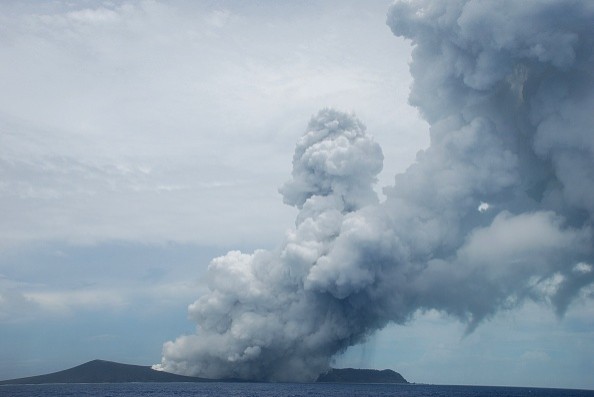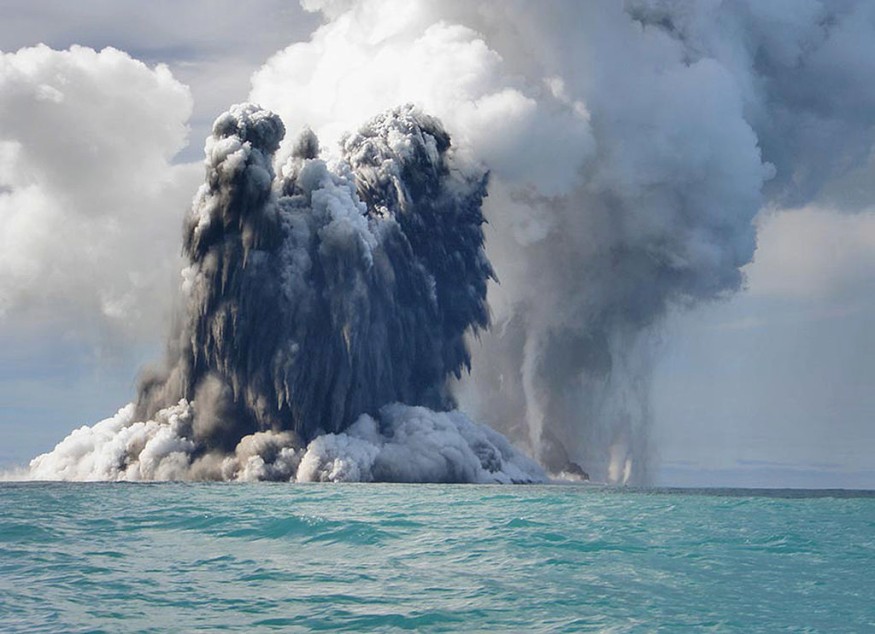The Tonga eruption may have caused a tsunami as tall as the Statue of Liberty. The explosion also produced air pressure waves that caused very swift tsunamis.

Tonga Eruption
It's possible that the gigantic Tonga eruption began as a single water mound of the Statue of Liberty's height before erupting as a series of planet-circling tsunamis.
Additionally, the second set of particularly fast-moving tsunamis was produced due to the explosive eruption. According to research published in the October issue of Ocean Engineering, this uncommon condition can make it difficult to provide early warnings for these frequently damaging waves.
According to Mohammad Heidarzadeh, a civil engineer from the University of Bath in England, a significant amount of water was moved upward when the Hunga Tonga-Hunga Ha'apai submarine volcano erupted in the South Pacific in January. As fluids often do, the water in that enormous mound subsequently "flowed downhill" to cause the initial wave of tsunamis.
Heidarzadeh and his team utilized computer models to determine the mound's initial size and information from tide gauges and deep-ocean devices within 1,500 kilometers of the eruption, many of which were in or close to New Zealand. Heidarzadeh claims that crucial pieces of information included the times and magnitude of the tsunami waves that arrived at certain places.
Examining Different Waves

The team examined nine initial wave alternatives, each with a different height and diameter and resembling a baseball pitcher's mound. According to the researchers, a massive water mound measuring 90 meters high and 12 kilometers in diameter provided the greatest fit to the real-world data.
There would have been 6.6 cubic kilometers of water in the first wave. Heidarzadeh claims, "This was a tremendously enormous tsunami."
The Tongan tsunamis, which began around nine times as tall as the one that ravaged Japan's Tohoku area in 2011, barely claimed five lives and inflicted approximately $90 million in damage, partly because of their remote origins.
The second set of tsunamis caused by a powerful air pressure wave is another peculiar feature of the Tongan eruption.
Steam Explosion
A steam explosion happened due to massive saltwater entering the heated magma chamber under the erupting volcano, which caused that pressure pulse. Heidarzadeh notes that when the pressure wave moved at rates greater than 300 meters per second over the ocean's surface, it pushed water in front of it to produce tsunamis.
These pressure wave-generated tsunamis arrived hours ahead of the gravity-driven waves spreading from the 90-meter-tall water mound over several beaches, including ones in the Indian Ocean and the Mediterranean Sea. At speeds between 100 and 220 meters per second, gravity-driven tsunami waves normally traverse the deepest portions of the ocean, far from continents. Waves slow down, water builds up, and when they hit the coast, where the damage occurs, they are in shallow seas close to the shore.
There has only been one previous volcanic eruption when pressure wave-generated tsunamis have been documented, and that was Indonesia's Krakatau eruption in 1883.
These earlier-than-anticipated arrival timeframes and the fact that the tsunamis caused by the Tongan eruption's pressure waves were around the same size as those caused by gravity may make it more difficult to issue early warnings for these tsunamis. According to Heiderzadeh, that is worrying.
Final Conclusion
According to Hermann Fritz, a tsunami scientist at Georgia Tech in Atlanta, one solution to the problem would be to integrate devices that monitor air pressure alongside the current marine equipment to detect tsunamis.
With such a configuration, scientists could determine if a tsunami going by is connected to a pressure pulse, giving them a hint in real time about how quickly the tsunami wave may be moving.
Related Article : Scientists Finally Starting to Understand How the Tonga Tsunami Happened
For similar news, don't forget to follow Nature World News!
© 2026 NatureWorldNews.com All rights reserved. Do not reproduce without permission.





